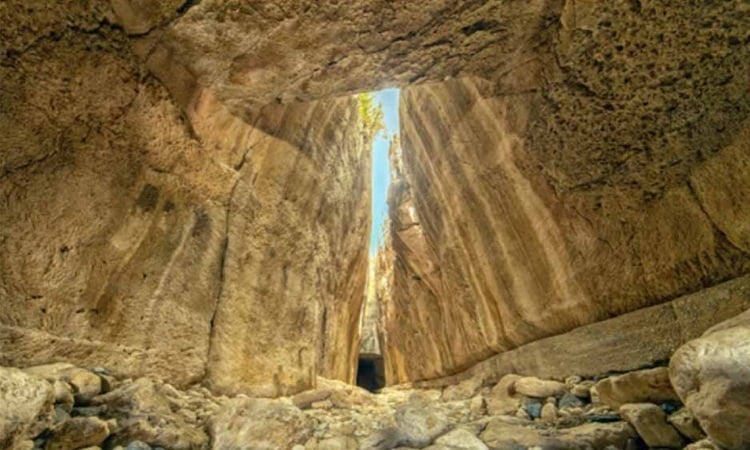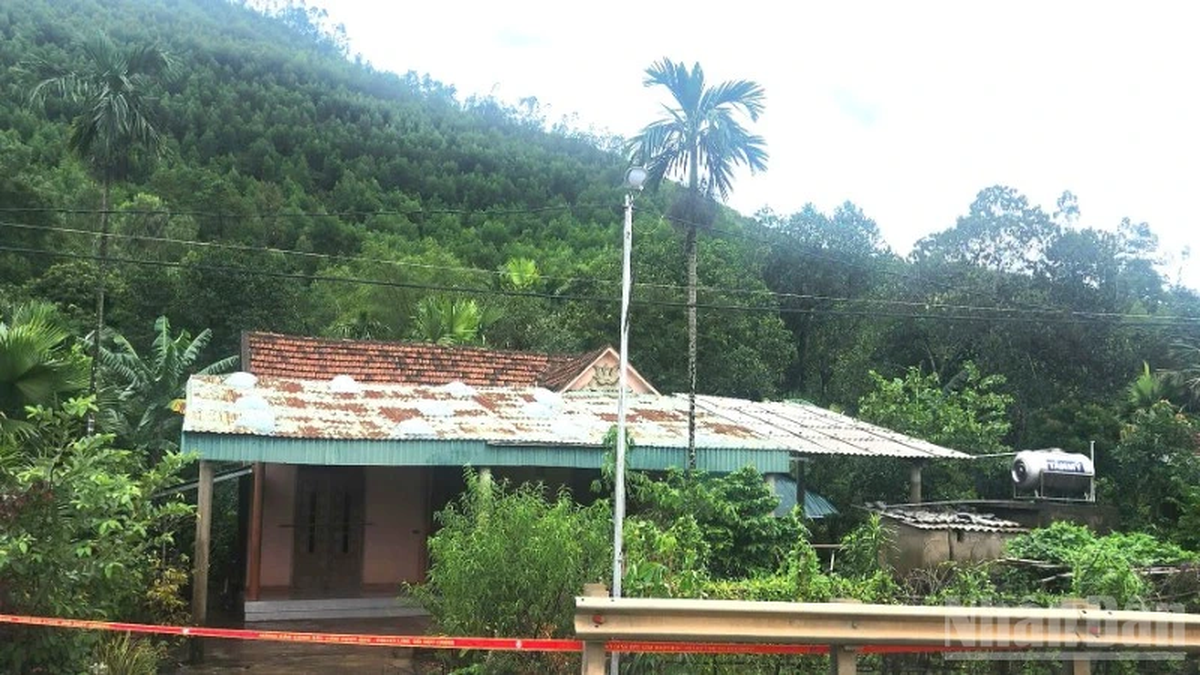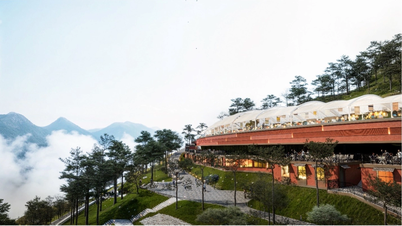The giant tunnel dug through the mountain was built to divert floodwaters threatening the port near the ancient city of Seleuceia Pieria, in present-day Türkiye.
Titus Tunnel through the mountain. Video : Ancient Origins
The Vespasian-Titus Tunnel is a 2,000-year-old engineering marvel. According to UNESCO, it is one of the most spectacular ruins of the Roman period due to its size, state of preservation, architectural and technical features.
Construction of the tunnel began during the reign of Titus' father, Vespasian, in the second half of the 1st century. Although construction continued throughout Titus' reign (79-81 AD), it was completed during the reign of Antoninus Pius in the 2nd century. Researchers know these dates thanks to some stone inscriptions in the tunnel, according to Ancient Origins . At the beginning of the tunnel, the names of Vespasian and Titus can be found, so it is possible that the tunnel was built during the reigns of two emperors. Another inscription in the downstream channel bears the name Antoninus Pius, suggesting that the work was completed during the reign of this emperor.
The Tunnel of Titus is located in modern-day Samandag-Cevlik, Türkiye. In Roman times, Samandag-Cevlik was known as Seleucia Pieria (Seleucia by the Sea). The ancient city was one of four cities in the Syrian tetrapolis, along with Antioch, Apamea, and Laodicea in Syria.
Seleucia Pieria was once an important Roman port city, through which goods from the East were shipped to Rome. However, the city faced a major problem: it was constantly threatened by floodwaters from the nearby mountains. As the floodwaters carried mud as they flowed down, the port became clogged and unusable. Although previous emperors had ordered the construction of canals, the system proved ineffective and the floodwaters continued to overflow.
To solve the problem at its root, Vespasian decided to build tunnels by digging through the mountain to divert the floodwater. This flood diversion system was built on the principle of blocking the front of the riverbed with a cover and diverting the water through a network of man-made canals and tunnels.
The Titus Tunnel was designed by engineers in the Roman legion and built by soldiers, sailors and prisoners. When completed, the Titus Tunnel stretched for 1.4 km. Because the entire tunnel was hewn through solid rock, it was a remarkable achievement of Roman engineering, especially in such a short time. Furthermore, this man-made wonder still exists today with little damage. The Titus Tunnel is a testament to the ingenuity of the Romans in solving the challenges facing their city.
An Khang (According to Ancient Origins )
Source link




![[Photo] General Secretary To Lam meets former British Prime Minister Tony Blair](https://vphoto.vietnam.vn/thumb/1200x675/vietnam/resource/IMAGE/2025/10/30/1761821573624_tbt-tl1-jpg.webp)
![[Photo] The Third Patriotic Emulation Congress of the Central Internal Affairs Commission](https://vphoto.vietnam.vn/thumb/1200x675/vietnam/resource/IMAGE/2025/10/30/1761831176178_dh-thi-dua-yeu-nuoc-5076-2710-jpg.webp)
![[Photo] Touching scene of thousands of people saving the embankment from the raging water](https://vphoto.vietnam.vn/thumb/1200x675/vietnam/resource/IMAGE/2025/10/30/1761825173837_ndo_br_ho-de-3-jpg.webp)
![[Photo] General Secretary To Lam attends the Vietnam-UK High-Level Economic Conference](https://vphoto.vietnam.vn/thumb/1200x675/vietnam/resource/IMAGE/2025/10/30/1761825773922_anh-1-3371-jpg.webp)












































































































Comment (0)